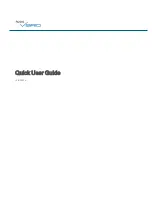78
Calibration
iina
74
e 0
7
.f
m
te
chn
ica
l ha
nd
boo
k
(1
40
8)
7.2.1
Internal Calibration
For internal calibrations the UL5000 differentiates between two possibilities:
•
If the unit is blanked off or disconnected from any chamber by a valve on the
the automatic calibration can be chosen (Soft Key no. 8).
•
If the unit is connected to a chamber or a bigger component the calibration has to
be performed manually because the reaction times on opening or closing the
internal leak standard vary depending on the volume of the chamber.
Notice:
It is recommended to use the automatic calibration if possible.
7.2.1.1
Automatic Internal Calibration
Once this procedure is started the entire procedure is performed automatically. At the
end (after about 25 s) a beep is released. Thereafter the unit is ready for further use.
7.2.1.2
Manual Internal Calibration
When
is selected it is assumed that the UL5000 is
connected to a component under test (if not please go to
After starting the
the UL5000 pumps down the test part
(if not already under vacuum) and opens the internal leak standard. Depending on
the volume of the part it may take some time for the helium signal to stabilize.
Therefore the user has to confirm that the signal has reached a stable level (Soft Key
no. 8).
The unit now runs through the tuning process and closes the internal leak standard
automatically. Again the volume of the test part determines how long it takes to pump
down the helium and to reach a stable background level, which has to be confirmed
by the user.
Thereafter the unit is calibrated.
7.2.2
External Calibration
For an external calibration a leak standard has to be attached to the part under test
or the inlet port directly.
Notice:
The shown leak rate can diverge of the printed values of the external
calibrated leak because of uncertainties and temperature coefficients.


















